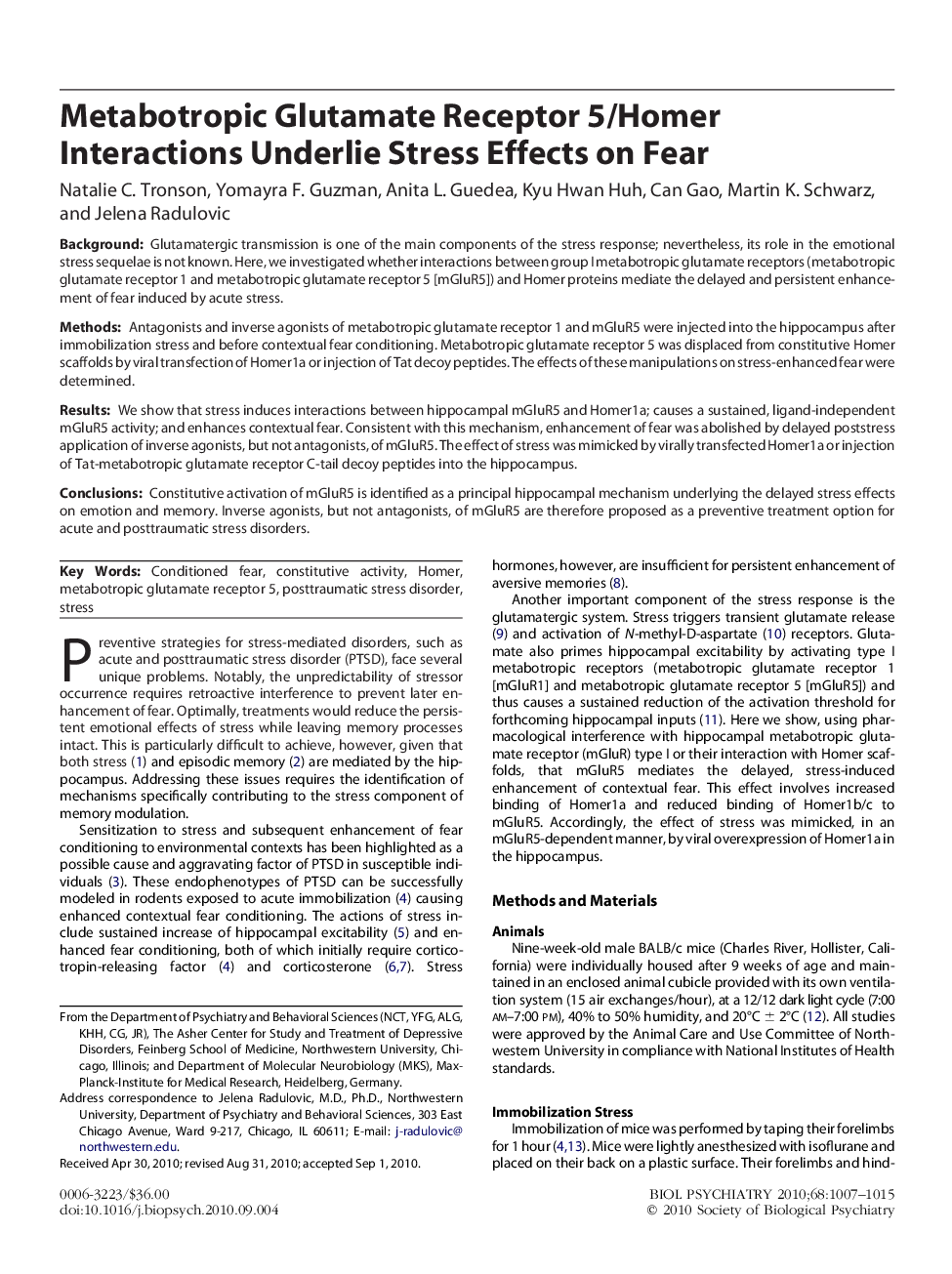| Article ID | Journal | Published Year | Pages | File Type |
|---|---|---|---|---|
| 4178989 | Biological Psychiatry | 2010 | 9 Pages |
BackgroundGlutamatergic transmission is one of the main components of the stress response; nevertheless, its role in the emotional stress sequelae is not known. Here, we investigated whether interactions between group I metabotropic glutamate receptors (metabotropic glutamate receptor 1 and metabotropic glutamate receptor 5 [mGluR5]) and Homer proteins mediate the delayed and persistent enhancement of fear induced by acute stress.MethodsAntagonists and inverse agonists of metabotropic glutamate receptor 1 and mGluR5 were injected into the hippocampus after immobilization stress and before contextual fear conditioning. Metabotropic glutamate receptor 5 was displaced from constitutive Homer scaffolds by viral transfection of Homer1a or injection of Tat decoy peptides. The effects of these manipulations on stress-enhanced fear were determined.ResultsWe show that stress induces interactions between hippocampal mGluR5 and Homer1a; causes a sustained, ligand-independent mGluR5 activity; and enhances contextual fear. Consistent with this mechanism, enhancement of fear was abolished by delayed poststress application of inverse agonists, but not antagonists, of mGluR5. The effect of stress was mimicked by virally transfected Homer1a or injection of Tat-metabotropic glutamate receptor C-tail decoy peptides into the hippocampus.ConclusionsConstitutive activation of mGluR5 is identified as a principal hippocampal mechanism underlying the delayed stress effects on emotion and memory. Inverse agonists, but not antagonists, of mGluR5 are therefore proposed as a preventive treatment option for acute and posttraumatic stress disorders.
